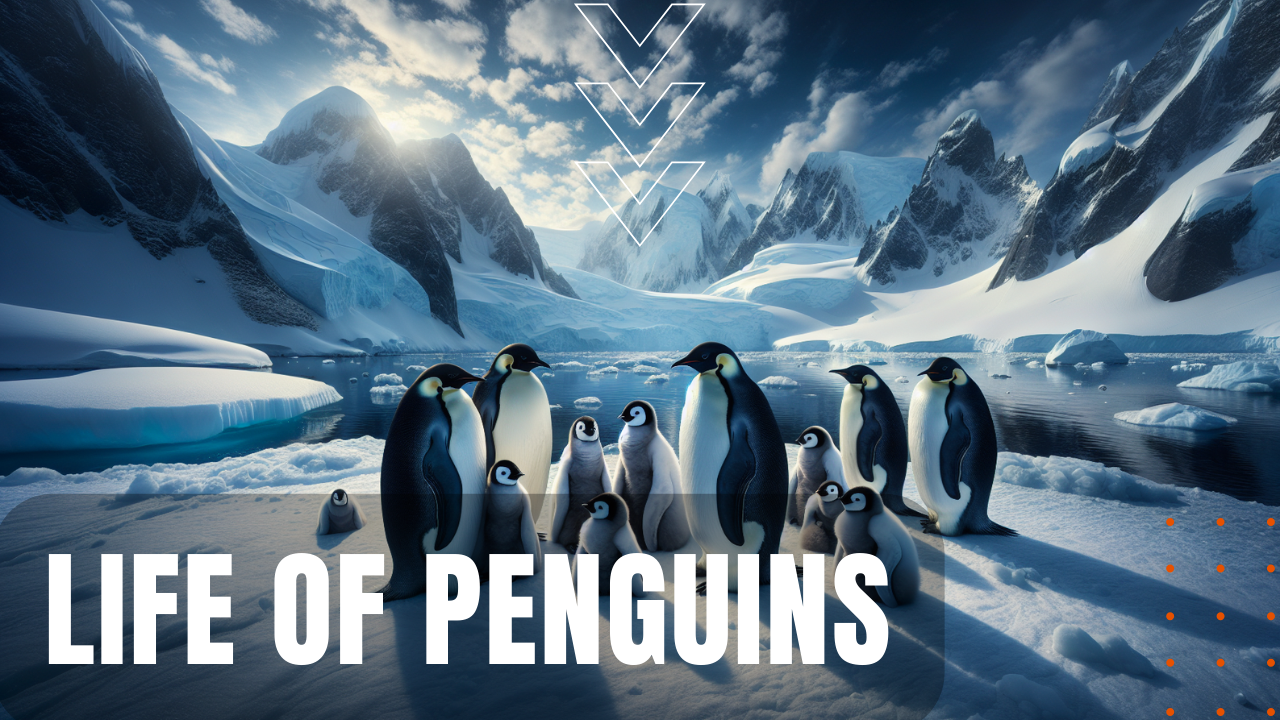The Life of Penguins

Of the family Spheniscidae, penguins are flightless birds found in the cool waters of the Southern Hemisphere, and only cross into the Northern Hemisphere at the Galapagos Islands. Consisting of 18 species found in six genera, the Adelie and Emperor penguins are the only species found on the Antarctic mainland, while the remaining species are distributed throughout the Southern Ocean up to New Zealand, Australia, Africa and South America. Ranging in weight and size from the three-pound, fourteen-inch-tall New Zealand little penguin to the 51-pound, four-foot-tall emperor penguin, all penguins possess heavy and solid bones to reduce the amount of energy required in long dives, while their waterproof, insulating plumage is dark on their backs, to camouflage them from predators approaching from above, while their white bellies camouflage them from predators approaching from below.
Deep Divers
Possessing streamlined bodies, penguins use their tails and legs to form a solid rudder in the water, where they spend upwards of 80% of their lives. Known as carnivores who eat fish, squid, krill and other small marine creatures, penguins are adept swimmers who can dive to 1,200 feet for longer than ten minutes per dive in the case of emperor penguins. Molting their feathers on an annual basis, during molting and nursing season in the case of emperors, penguins are unable to eat due to their lack of thermal protection in the water, fasting from 40 days in the case of crested penguins, while male emperor penguins fast for 120 days while they rear their chicks through the harsh winter months in Antarctica. In a recent study published in the journal Science, scientists employed remote electroencephalogram monitoring on chinstrap penguins, discovering the bird’s unique micro-sleep capabilities, where they nodded off more than 10,000 times per day for mere seconds at a time.
Highly Social
Known to be highly social birds, often breeding in large colonies called rookeries ranging in size from a few thousand to more than 20,000 pairs, penguins are typically monogamous during their breeding season, exhibiting elaborate courtship rituals during their spring and summer mating season, and while king penguins possess the longest breeding season at 14 to 16 months, scientists are at a loss for why emperor penguins breed annually during the frigid antarctic winter months from June through August, when air temperatures can plunge to minus 76 degrees Fahrenheit, with wind speeds upwards of 124 miles per hour. Hatching one to two eggs per breeding season, both parents take turns caring for their chicks, regurgitating food to feed hatchlings until they’re old enough to fend for themselves, making the life of penguins, a flightless, tobogganing wonder of the animal world.
